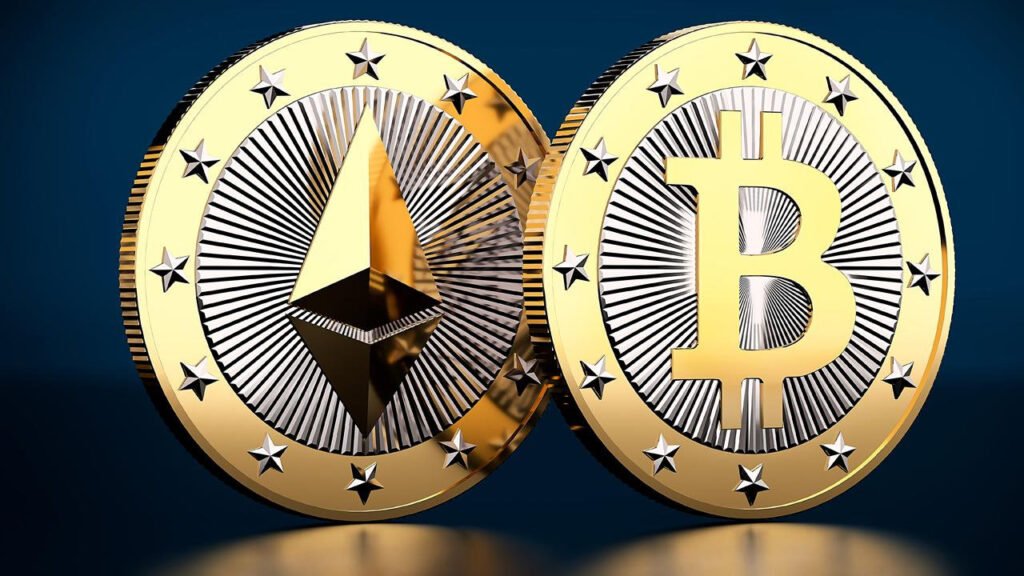The Bitcoin Market has seen notable changes following a significant geopolitical event between the United States and China. The market responded powerfully to news on May 12, 2025, that the United States and China would cut their respective tariffs from 145% to 30% over 90 days. The financial markets reacted immediately to this statement; bitcoin values surged before finally showing some turbulence.
Tariff Cut Boosts Markets
Investors all across were pleasantly surprised by the tariff cut, and the financial markets responded quickly. Reducing tariffs helped to allay worries about an approaching economic downturn brought on by trade conflict, which had been a source of dispute between the two biggest world economies. As investors hailed the transaction, the financial markets—including the S&P 500 futures—gained momentum and climbed by 3%.

The news immediately affected Bitcoin, Ethereum, and XRP in the crypto realm. Prices jumped as the hope that permeated conventional financial markets seeped into the crypto realm. As traders responded to the encouraging news, the cost of Bitcoin surged quickly to a high of $105,500—a clear departure from past levels. While XRP experienced an even more amazing leap in value, Ethereum saw its value rise, too.
Bitcoin Market Volatility
The biggest cryptocurrency by market capitalisation, Bitcoin, first showed a notable increase after the declaration. Driven by hope about the U.S.-China tariff cut, Bitcoin’s price shot up an amazing $105,500. But this positive momentum was fleeting; Bitcoin finally saw a drop and closed the day at $102,451. This 1.7% drop from its prior closing emphasises how naturally erratic the bitcoin market is.
With a 25% rise in value, Bitcoin has exhibited a favourable performance over the previous month despite the decline. Bitcoin’s present resistance level, close to its all-time high of $109,000, is making it difficult for it to break over and implies that investors might be waiting for more clarification on the state of the world economy before committing more money.
The fast price swings highlight Bitcoin’s sensitivity to world economic developments. Although the tariff lowering had a short-term benefit, Bitcoin’s inability to sustain the gains suggests traders remain wary about the future. The present uncertainty in the macroeconomic climate and Bitcoin’s price behaviour point to a possible short-term volatility in the cryptocurrency market.
Ethereum Price Trends
Though with somewhat less volatility, Ethereum, the second-largest cryptocurrency by market capitalisation, followed the same trend as Bitcoin. Reflecting a good attitude among traders, Ethereum peaked at $2,600.58 on the announcement of the duty cut. Like Bitcoin, however, Ethereum also saw a reversal and concluded the day at $2,453.93, a 2.1% drop from the previous day’s close.
Development in the larger blockchain and DeFi (decentralised finance) areas typically shapes Ethereum’s price behaviour. Although the tariff lowering gave a brief lift, Ethereum’s price performance is also correlated with its fundamental changes, such as network improvements and expansion of distributed applications. Therefore, the price of Ethereum is not only dependent on macroeconomic elements like Bitcoin, yt the general attitude of the market still influences price movement.
As Ethereum responds to changes in the financial market and internal network improvements, its price can continue to show notable swings ahead. At significant price points, analysts predict opposition to Bitcoin; so, it will be crucial to keep an eye on Ethereum’s performance given forthcoming technical developments and legislative news.
XRP Market Volatility
Created by Ripple Labs, XRP, the cryptocurrency, has always been known for being somewhat erratic and market news-responsive. In this instance, XRP responded quite favourably to the U.S.-China tariff lowering. Rising sharply, XRP peaked at $2.62 during the day before settling at $2.50 at market closing. With a 4.2% rise from the previous day’s closing, XRP ranked among the top cryptocurrencies in performance.

The increase in XRP was probably motivated by the crypto community’s general positive attitude and market hope. Nevertheless, XRP’s price behaviour can be erratic and subject to significant volatility, just as with other cryptocurrencies.
XRP is still a popular alternative for traders trying to profit on brief price swings, even if they are highly erratic. Though it is also noteworthy that XRP’s legal challenges with the U.S. Securities and Exchange Commission (SEC) may continue to create uncertainty in its long-term price trajectory, the announcement of the U.S.-China trade deal and its subsequent rally show the responsiveness of XRP to global market developments.
Final thoughts
In conclusion, the U.S.-China tariff reduction temporarily boosted the Cryptocurrency market, including Bitcoin, Ethereum, and XRP. While the initial rally was promising, the subsequent pullbacks demonstrate the volatile nature of the crypto market. Bitcoin and Ethereum, in particular, showed signs of difficulty in maintaining their gains, with resistance near all-time highs and ongoing geopolitical uncertainties posing a challenge to sustained growth.
XRP experienced a more significant rally than its counterparts, reflecting its sensitivity to global events. However, the volatility across all three cryptocurrencies highlights the importance of caution and strategic planning for investors navigating this rapidly evolving market.
As the global economic landscape continues to shift, cryptocurrency investors must remain vigilant and closely monitor macroeconomic trends and developments in the crypto space to make informed decisions.


